Where to Eat & Drink in Neapoli, Athens
Between Strefi and Lycabettus Hills, Neapoli...
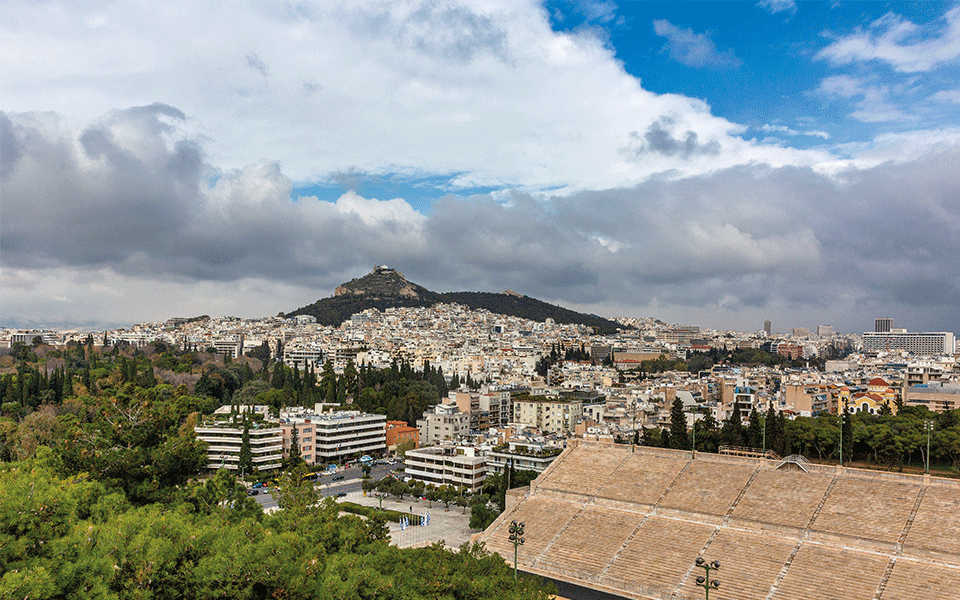
The view from Ardittos Hill towards the Panathenaic Stadium and Lycabettus Hill.
© Perikles Merakos
Many a time, caught in traffic on Ardittos Street while heading in the direction of downtown Athens, I turned my gaze towards the mid-century building at number 34 near the foot of the hill, and wondered what kind of neighborhood extends behind it. I knew that the district was called Mets, that it’s inextricably linked in the minds of Athenians to the 1st Cemetery of Athens, but I’d rarely been through it and had never walked its streets. I decided to do just that one rainy Friday morning, starting at Archimidous Street, which runs behind the Panathenaic Stadium (the street, which marks the boundary between the neighborhoods of Varnava and Mets, hosts a farmers’ market every Friday). What follows is an account of my walk.
Moving between the stalls of fruit and herbs, I try to locate the entrance to Ardittos Hill, which rises over one end of the neighborhood, expecting that it will offer a spectacular view. A local directs me to an opening in the fence at the top of the stairs on Kleitomachou Street; apparently, this gap is used to enter the park and reach the running track which curves around the top of the Panathenaic Stadium (also known as the Kallimarmaro – literally, “beautiful marble”). After sneaking in, I head upwards, to the top of the hill. With the cement sprawl of the city to my west barely visible behind the pine trees, I can easily imagine Athens as it was at the end of the 19th century, when the Ilissos River ran along what is now Ardittou Street, and a new neighborhood was beginning to spring up on its south bank.
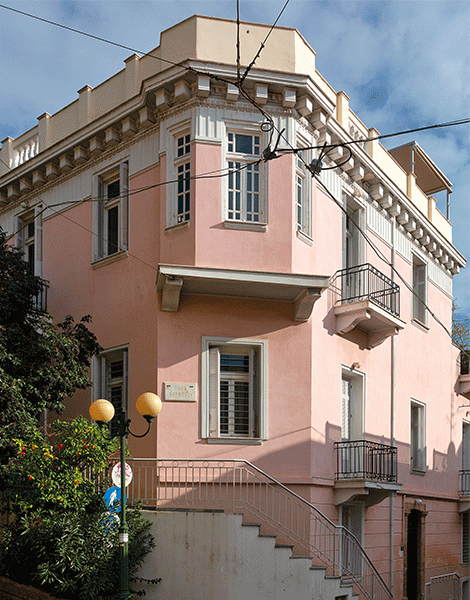
The pink townhouse on the corner of Sorvolou and Miniati.
© Perikles Merakos
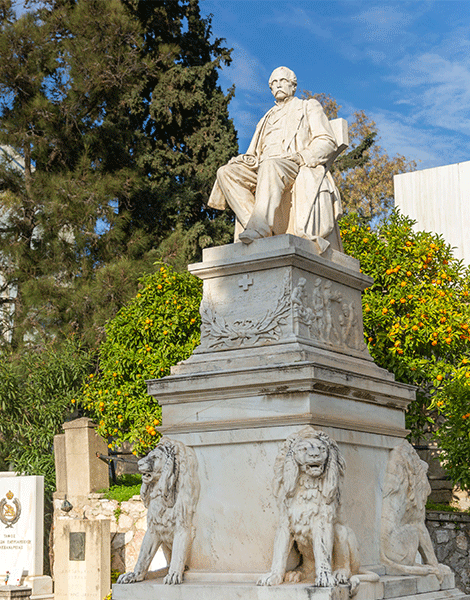
The funerary monument of George Averoff at the 1st Cemetery of Athens.
© Perikles Merakos
Leaving the hill behind me, I continue along Kleitomachou Street, where my eyes are drawn to a beautiful corner residence. The owner sees me photographing it, and engages me in conversation. She tells me the house belonged to the film director Nikos Koundouros (1926-2017), and was, in fact, designed by him. She is, she says, his widow. I couldn’t have wished for a more fitting welcome to a neighborhood beloved by people of the arts, an area often referred to as the “Montmartre of Athens,” than this.
Aristocratic Markou Mousourou Street, where I turn right, and pedestrianized Nikoforos Theotokis Street, where it leads me, were long home to sculptors and painters. Surely something of the aura of a different era must have lured them here to this location. Theotoki Street continues to charm today and, as if to prove this fact indisputably, I come upon a film crew taking advantage of the period features of the street to shoot a scene for a TV series. The rest of the neighborhood does not disappoint, either.
Miniati, Fotiadou and Sorvolou streets, and many other roads in the neighborhood, are full of beautiful buildings of various periods that stand unpretentiously alongside more modern homes. I take particular note of the neoclassical residence with a sunroom at 7 Aristonikou Street, the pink townhouse on the corner of Sorvolou and Miniati, and the terraced dwellings on Markou Mousourou. At the top of the street, I reach Logginou Park, which some say is haunted. Hoping for a paranormal experience to spice up my day, I stride confidently across the park, but fail to sense any negative energy or hear any inexplicable sounds – only the laughter of children coming from the play area.
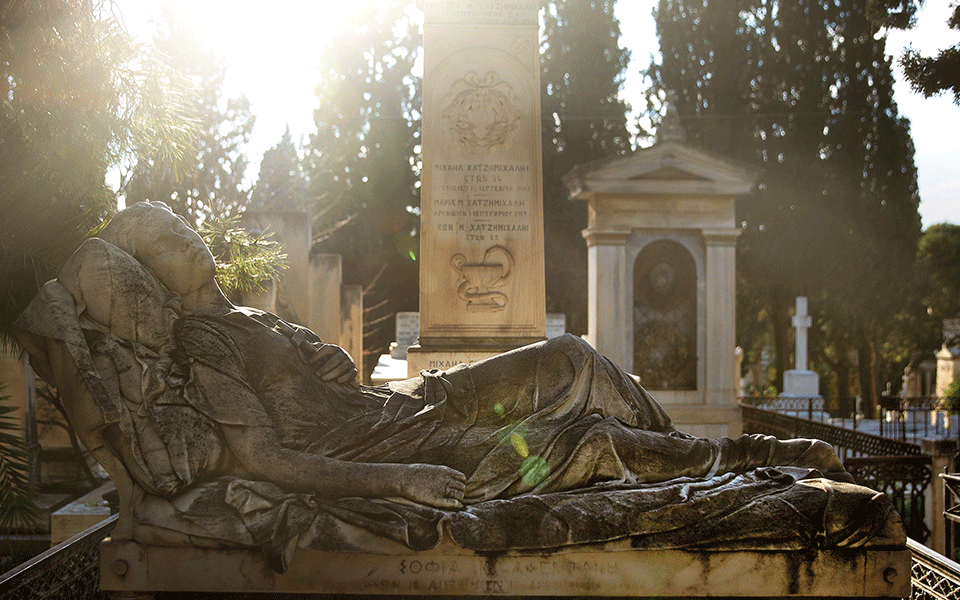
Yannoulis Chalepas’s “Sleeping Beauty” at the 1st Cemetery of Athens.
© Prikles Merakos
From the park, I walk down the steps to the charming pedestrianized street of Logginou, which takes me to the 1st Cemetery of Athens, to end my stroll among mausoleums and funerary art. I would need an entire day to explore this outdoor sculpture exhibition – guidebooks from as early as the 1840s referred to the cemetery as such – but I decide to walk around a bit until the rain forces me to retreat. The first raindrops fall on me by the grave of the legendary singer Sofia Vembo.
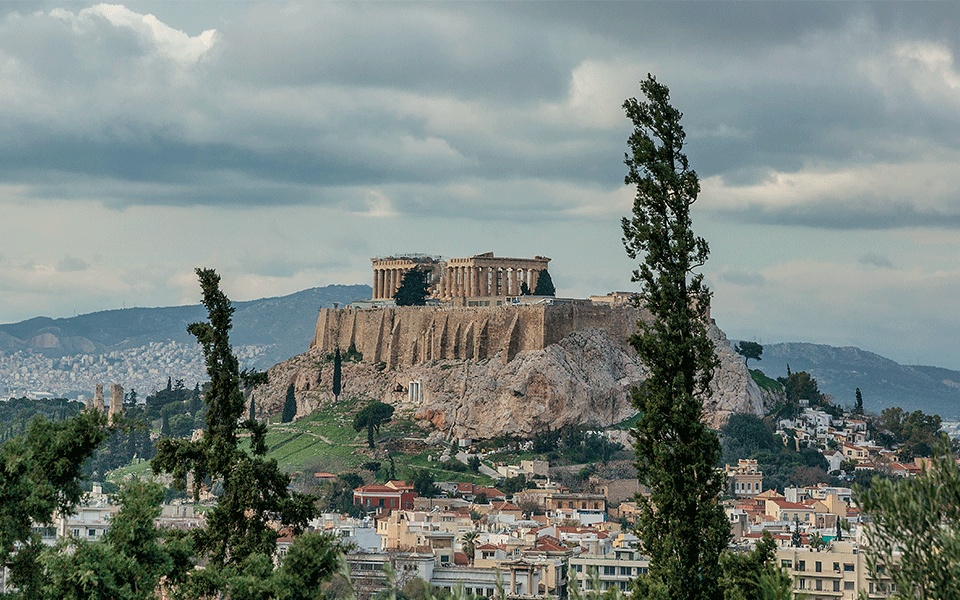
The view of the Acropolis from Ardittos Hill.
© Perikles Merakos
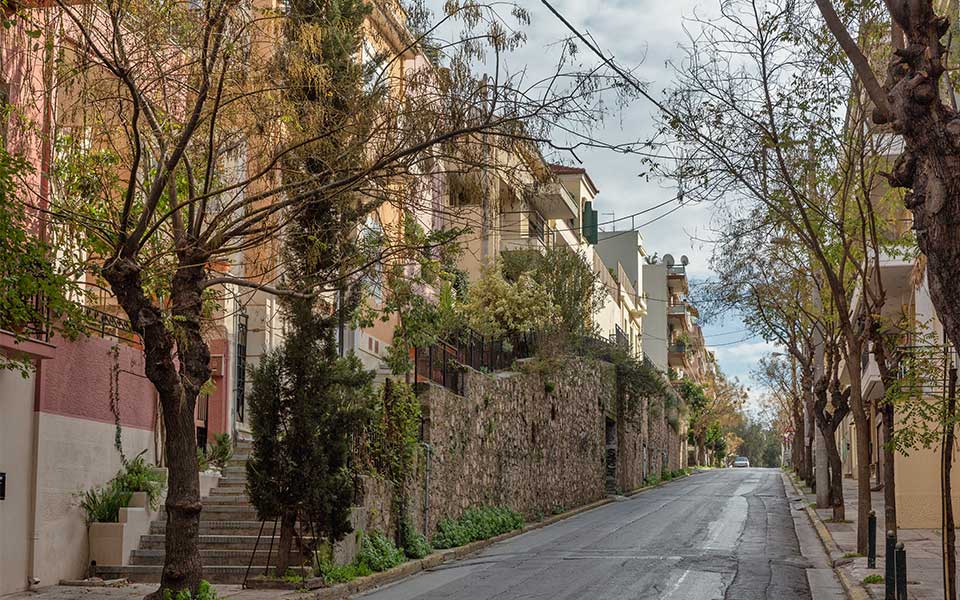
The aristocratic Markou Mousourou Street.
© Perikles Merakos
The history of the neighborhood begins in 1872, when the Bavarian Johannes Fuchs (son of Johan Fuchs, founder of the Fix brewery) decided to open his first beer garden on the slopes of Ardittos Hill. At the time, all that was there was the cemetery, which was located there to take advantage of the gentle breeze, and Giorgis Argyriou’s flour mill (an 18th-century building that was sadly demolished in 1986), where Athenians came to mill their wheat. Soon, families moving to the city from the island of Tzia (or Kea) begin to build homes around the beer garden, gradually creating a small neighborhood of modest houses and neoclassical mansions.
The first name given to the area was “Pantremenadika” (“Where the married men go”), which referred to certain wood huts built there in the early 20th century, said to be used for illicit trysts. The name by which it has come to be known, however, was the one chosen by Fuchs himself to commemorate the last battle in the Franco-Prussian war, which took place in 1871 near the French town of Metz (transliterated into Greek as “Mets”).
Mets continued to be settled in the years leading up to and after WWII, with modern buildings being erected alongside more traditional houses and neoclassical homes. Throughout this time, many artists and architects moved into the neighborhood. The residence at 34 Ardittou Street, the one that catches my eye when I’m stuck in traffic, was home in the 1950s to the painter Yannis Mitarakis, and after that to the engraver Anastasios Alevizos, better known as Tassos, and his wife, the painter and engraver Loukia Maggiorou. Mets continues to attract artistic souls, which makes it well regarded – and very expensive. Thankfully, it still preserves a charming simplicity and remains human, approachable, and not at all snobbish.
This article was first published in Greek on www.kathimerini.gr
What to look for in the 1st Cemetery of Athens
Between Strefi and Lycabettus Hills, Neapoli...
From historic landmarks to edgy street...
Explore Athens' heritage, from Monastiraki Square...
A major restoration project is bringing...